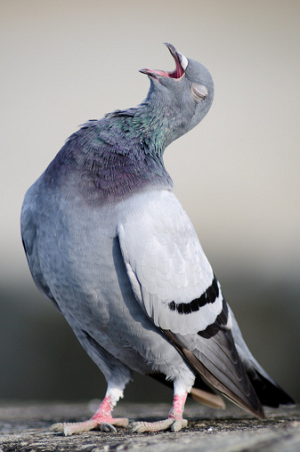Apr 14, 2025
Apr 14, 2025
by R. D. Ashby
 Observe the behaviour of a bird, a pigeon, say. It appears to be in constant appraisal of itself in awareness of perceived circumstances. Every move it makes appears directed to self-preservation; it aims to avoid injury, fleeing from what is realised as a threat - a threat to its life, the observer would remark. The ‘threat to its life’ appears so substantial a realisation as to compel a reaction of avoidance or flight, but in actual fact is without a definite concept of ‘life’; only that the approaching form itself is an image of threat - and that, only when it is near enough to pose a threat – that compels a reaction in a specific response. Being ‘physically threatened' appears to hold within it the instinctive fear of ‘threat to its life’.
Observe the behaviour of a bird, a pigeon, say. It appears to be in constant appraisal of itself in awareness of perceived circumstances. Every move it makes appears directed to self-preservation; it aims to avoid injury, fleeing from what is realised as a threat - a threat to its life, the observer would remark. The ‘threat to its life’ appears so substantial a realisation as to compel a reaction of avoidance or flight, but in actual fact is without a definite concept of ‘life’; only that the approaching form itself is an image of threat - and that, only when it is near enough to pose a threat – that compels a reaction in a specific response. Being ‘physically threatened' appears to hold within it the instinctive fear of ‘threat to its life’.
19-Nov-2012
More by : R. D. Ashby

|
Very kind of you to express an opinion, sir. Life is the principle that draws the whole creative process in an affective way. It is appropriate that Christ, who identifies as "'the way, the truth, and the life" (Jn 14:6) says: ":And I, when I am lifted up from the earth, will draw all men to myself." (Jn12:32) |

|
Thanks for an engaging,intellectually satisfying read.Regards. |